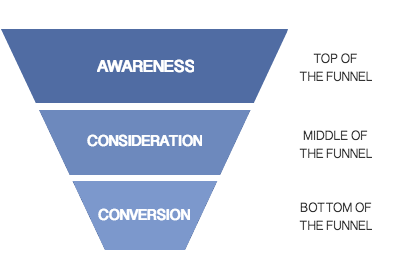
SEO Keywords for Every Stage of the Conversion Funnel
IIf you’ve been following digital marketing strategies, you may have come across numerous debates on search engine optimization (SEO) and conversion rate optimization (CRO). While some argue about which of the two is better, others talk about the possibilities of merging the two.
While SEO keywords usually cater to search engines, CRO is meant to increase the conversion rate and cater to the customer. In this article, we talk about how you can use SEO keywords to optimise your web content for both search engines and customers, at the same time.
The use of keywords depends on which part of the conversion funnel you are catering to. A conversion funnel is a framework for visualising the process or journey a customer takes before converting (usually an action like subscribing to your service or purchasing your product.)
Categorisation of keywords is an extremely important aspect to consider because the customer can have a different intent at different points of the funnel, whether it’s awareness or conversion.

Top of the Funnel
When a customer is at the top of the funnel, it means that they are just gaining awareness about a product or service and may not be looking to buy just yet. It can be thought of as equivalent to browsing through a shopping mall.
The key here is to put commercial intent away and cater to the needs of the customer to try and understand what they might be looking for. You will want to use keywords signifying that someone is searching for information about a product or is looking for a product/service for a problem that they may have. For example, if someone is dissatisfied with the phone they are using they might search for “why is my phone heating up” or “how to stop your phone from heating up”. So you can cater to content to help guide them at this stage.
There are also a number of free tools available on the internet to help you with keywords, such as Google’s Keyword Planner, Answer the Public, Ubersuggest and Infinite Google Suggest. The kind of content useful at this stage includes but isn’t limited to infographics, blog posts, and podcasts.
Middle of the Funnel
At this point, customers are more or less aware of your brand and the competition and might be looking for more information about your products. Taking the previous example forward, they might search to “compare X and Y brand” or “Reviews of X phone”. Your goal here is to navigate the customer to the next stage of the funnel.
The kind of content used here can be a little more specific such as guides, expert interviews, case studies, reviews, free trials or testimonials.
Bottom of the Funnel
At this point, customers are ready to make a purchase, but they just require a last round of convincing. They might search for “Where to buy Mobile X” or “Buy Mobile X lowest price”. Keywords here must cater to the costs and pricing, reviews, where to buy it, coupons and discounts and the like about the product. Also, make sure to use a lot of modifiers here, such as Buy, Find, Compare, Order, Purchase.
Knowing where a customer is in the funnel can help you know exactly what they are looking for so you can guide them well through the process. Moreover, do not discount long tail keywords. Long tail keywords (as opposed to short-tailed ones) are four or more keywords stringed together and are more specific. For example, a blog post on “android phones that never heat up”.
With intelligent keywords and quality content, you should have no problem increasing that conversion rate!

